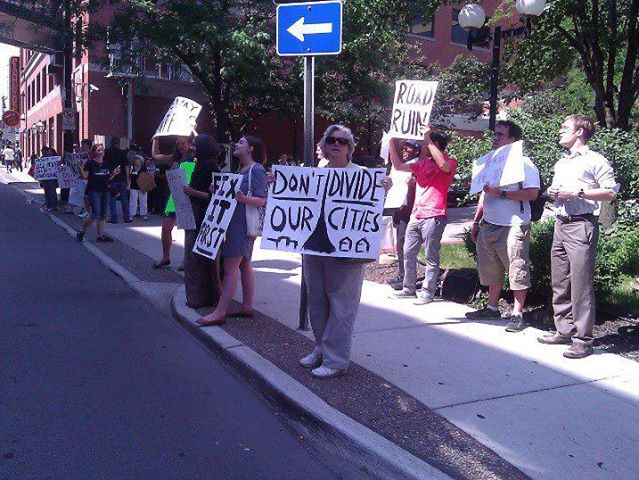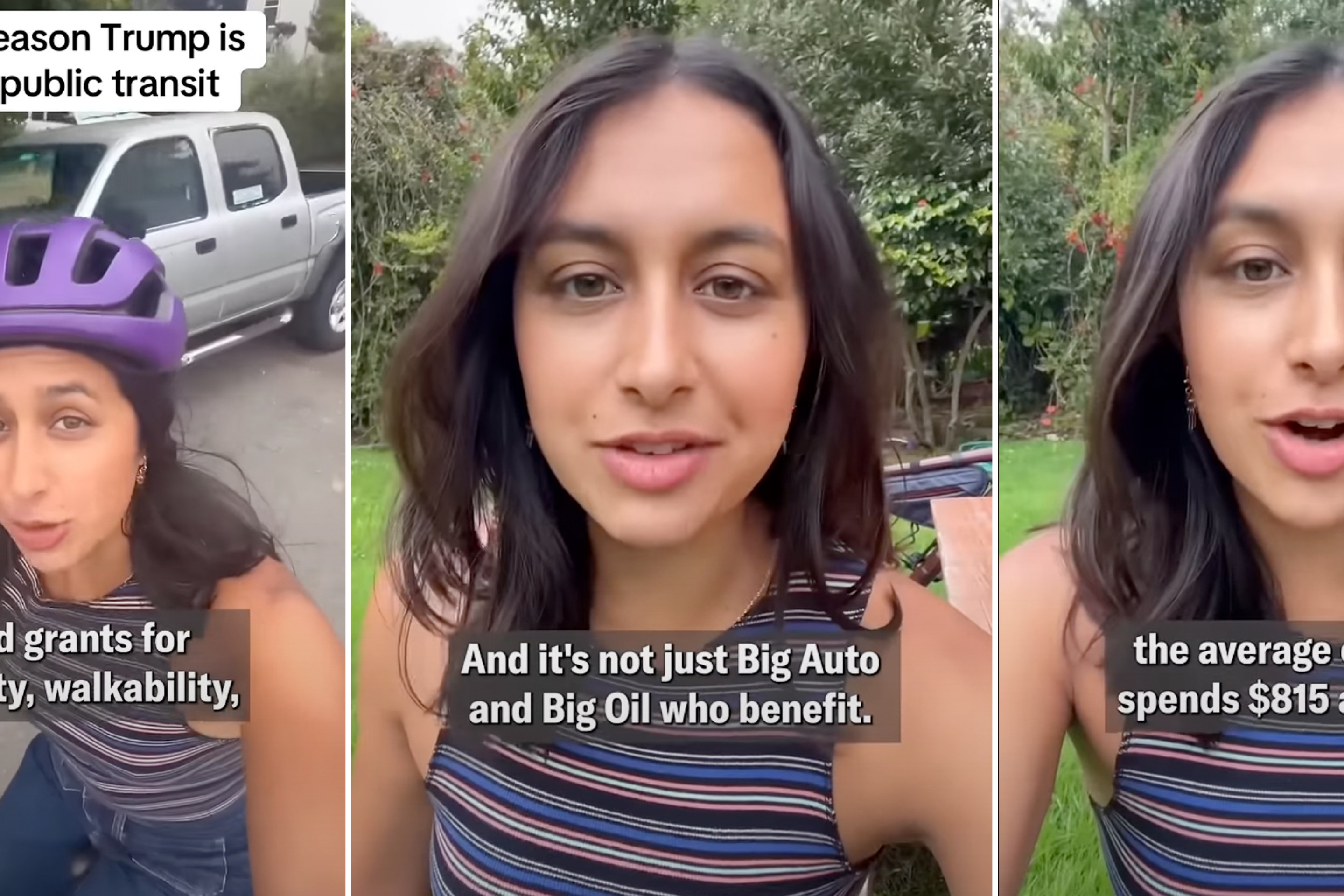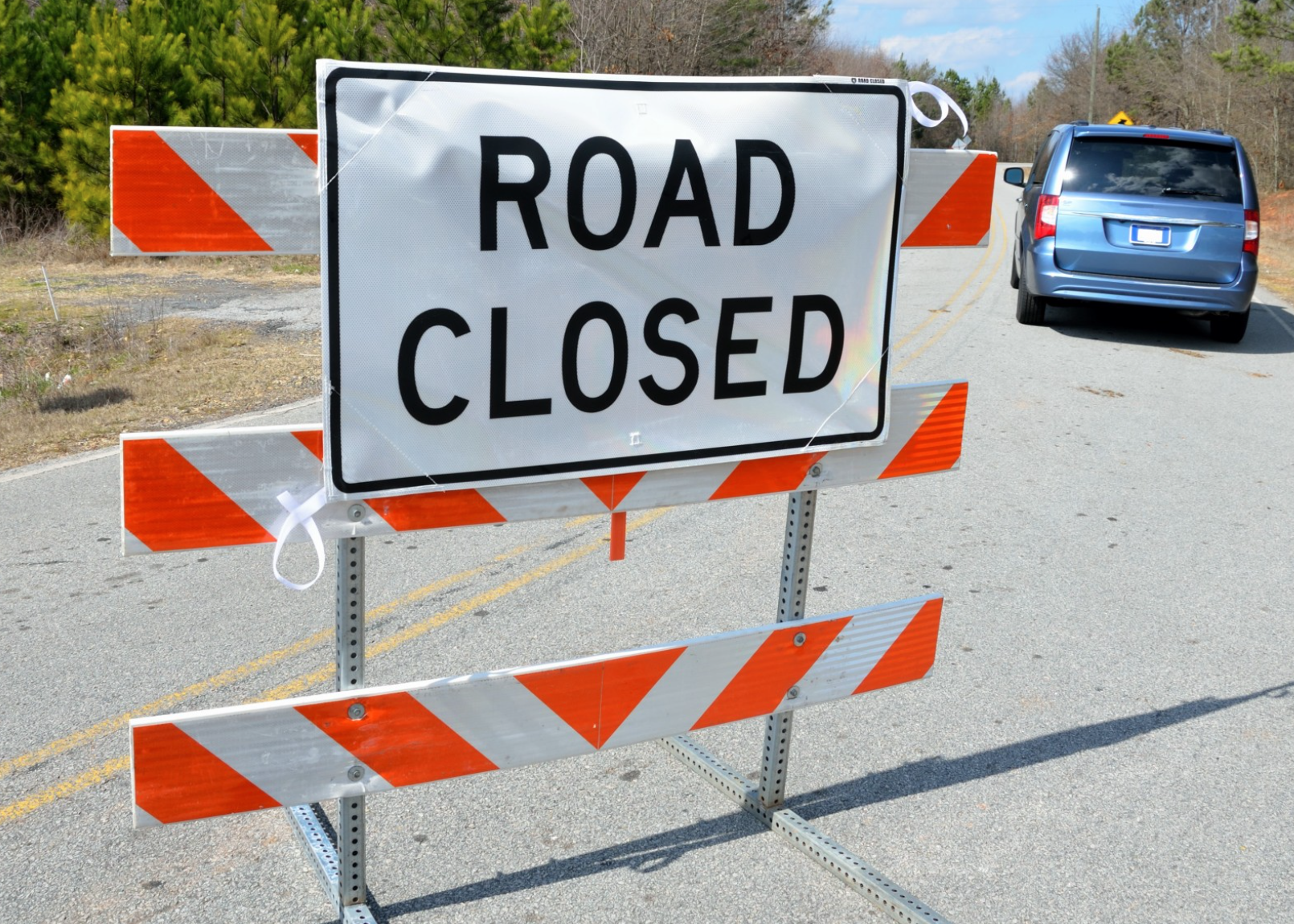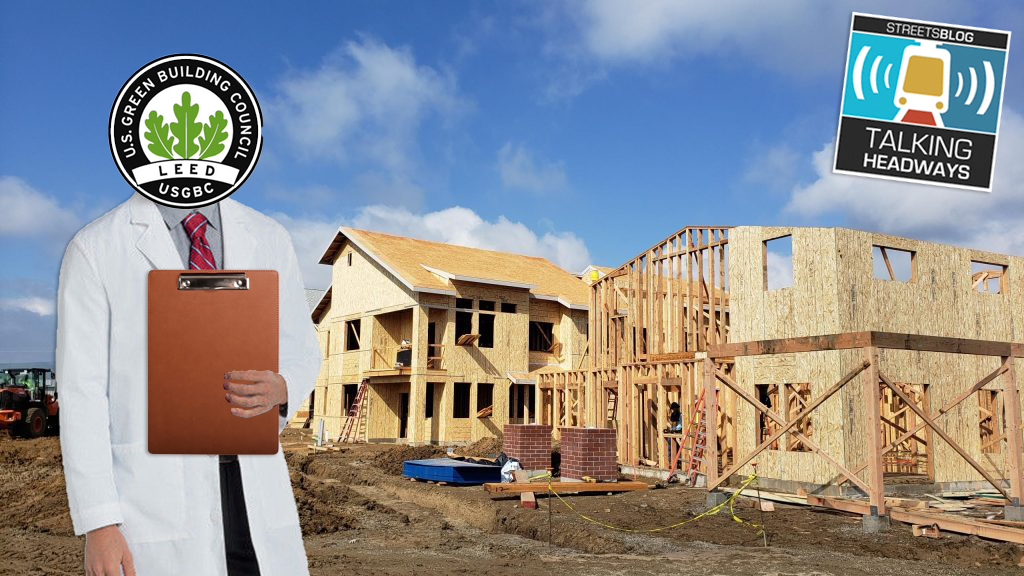The evolution of state and regional transportation agencies is painfully slow in places like Missouri and Ohio, where officials are plowing ahead with pricey highway projects conceived of decades ago. But plenty of Midwesterners have different ideas for the future of their communities, and they aren't shy about speaking up.

One after another, residents of major Midwestern cities have challenged highway projects in recent months. People in Detroit, St. Louis, Milwaukee, Cleveland and Oklahoma City have reached the conclusion that spending hundreds of millions of dollars on road widenings might not be in their communities’ best interests.
And it's not just a few activists. Challenges have come from people like Council Member Ed Shadid in Oklahoma City, institutions like the Michigan Suburbs Alliance, and local governments like the city of Maplewood, just outside St. Louis.
Detroiters held signs outside a meeting of their regional planning agency earlier this month, picketing plans for $4 billion worth of highway expansion projects. Though the Southeast Michigan Council of Governments ultimately green-lighted the plans, members of the agency had to sit through two hours of negative public comments first. Not only was the public moved to speak out, so were the city of Detroit and the county of Washtenaw, which officially opposed the project.
And in Oklahoma City, the grassroots group Friends of a Better Boulevard has twice fought back state DOT plans to install a wide, highway-like boulevard in a developing area near the city's downtown. As we reported this week, the FHWA recently intervened on the group's behalf and forced ODOT to consider a proposal to restore the street grid instead of building a new road.
Meanwhile, in Wisconsin, environmental and civil rights groups may soon obtain a court injunction against a $1.7 billion interchange outside Milwaukee, on the grounds that project sponsors did not consider its potential impact on sprawl and transit-dependent communities. And in Cleveland, a few scrappy activists and the Sierra Club are opposing a $100-million-per-mile roadway that would displace 90 families on the city's southeast side.
Now St. Louis has a highway battle on its hands. In many ways, this fight echoes the other protest movements. The South County Connector -- like Cleveland's "Opportunity Corridor" -- is a "zombie" highway project. It was first conceived in 1957. The original concept was for an “inner belt expressway." Its stated purpose is to "improve connectivity between south St. Louis County, the City of St. Louis, and central St. Louis County" and "improve access to Interstates 44, 64, 55, and 170."
But again, a strong opposition movement is beginning to emerge. James White, mayor of Maplewood, one of the affected communities, described the project's purpose this way: "to shift one conflict traffic area to another location."
In a recent letter to St. Louis County, White lambasted the project. "Multi-modal transportation concerns in the region are severely lacking, and this project will at best have no meaningful effect and at worse create massive barriers to future progress," the letter said. "We have seen no details nor been given any meaningful assurances that this project would do anything other than bisect and segregate our community further."
The St. Louis County Department of Highways and Transportation doesn't seem to be responding to the criticism very graciously. In response to complaints about the South County Connector, an agency spokesperson told a local reporter, "We're a highway department, not a bicycle department."
Jennifer Allen of the local advocacy group Trailnet said the highway project will potentially weaken investments the region has made in light rail and a comprehensive system of off-street trails. There are other problems as well. The traffic modeling used to justify the road is from 2002, before the driving slump began and when St. Louis had a larger population.
"It’s just outmoded planning," Allen said. "If you’re a highway department all you see as a solution are highways. We’ve got to make that shift towards larger thinking about mobility."
How long will it be before the transportation authorities in this region catch up with the general public?





